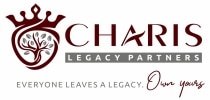Self employed individuals with charitable legacy goals can take advantage of unique retirement savings options to help build wealth surplus.
For self employed individuals – small business owners with no full-time employees other than the owner (and spouse, if the spouse is involved with the business) – there are some unique opportunities for maximizing pre-tax retirement contributions, with the goal of creating as much wealth surplus for legacy giving as possible.
Individual 401ks
Foremost among the retirement saving options available to self-employed individuals is the ability to utilize an individual 401k, or i401k, to maximize pre-tax retirement contributions.
Who Can Contribute to an i401k?
An individual 401(k) is for self-employed individuals with no employees (except potentially their spouse). If you’re self-employed and you’re classified as a sole proprietor or independent contractor, partnership, C corporation, S corporation, or Limited Liability Company (LLC), you’re eligible for an i401k.
Can Your Spouse Participate in Your i401k?
Depending on how your small business is structured, your spouse can also be included in the i401k and make his or her own contributions, again opening up the ability to save up to $116,000 per married couple in pre-tax contributions annually, plus catch-up contributions for those 50 and over.
When it comes to deciding on the right business structure to use for you and your spouse to both participate, always check with your CPA. Here is a good resource from the Small Business Administration to get you started.
How Much Can You Contribute to an i401k?
With an i401k you can participate as both the employer and the employee. As the employer, you can contribute up to 25% of your compensation, not exceeding $58,000 for the 2021 tax year. Typically, you can deduct these contributions as a business expense. As the employer, you’re not required to make contributions every year, but in the years you do make contributions, all participants have to receive the same percentage.
As the employee, you can contribute up to 100% of your compensation, up to $19,500 for the 2021 tax year (or $26,000 if you’re 50 or older).
SEP IRAs
Another option for self-employed individuals is a SEP IRA, though i401ks generally offer greater annual contributions and bigger tax deductions, depending on your income.
What is a SEP IRA?
Simplified Employee Pension Individual Retirement Accounts (SEP IRAs) have been around since 1978. The name is a bit of a misnomer, since even though they’re described as a “pension” SEP IRAs are not defined benefit plans (paying out a fixed amount) but are more like personal individual retirement accounts (IRAs). The biggest advantages of a SEP IRA are that they’re easy to set up and maintain and they have more generous tax breaks than an IRA.
Who can Contribute to a SEP IRA?
Freelancers, gig workers, and independent contractors are all eligible to contribute to SEP IRAs. This includes self-employed individuals as well as sole proprietorships, C Corporation, S corporations, and Limited Liability Partnerships (LLPs).
One of the aspects of a SEP IRA that differentiates it from an i401k is that only employers can make contributions (if you’re self-employed and therefore both the employee and employer you can still make contributions as the employer).
How Much Can You Contribute to a SEP IRA?
You can contribute 25% of your compensation, up to $58,000 for the 2021 tax year. Since employees cannot make contributions, there is no catch-up contribution option for those over 50.
SIMPLE IRAs
A SIMPLE IRA is an option for those who are self-employed as well as small businesses. While SIMPLE IRAs do have some tax advantages, like a SEP IRA, these accounts typically have lower contribution limits and smaller tax deductions compared to an i401k (though it depends on your income level).
What is a SIMPLE IRA?
A Savings Investment Match Plan for Employees (SIMPLE) IRA is an option for self-employed individuals, as well as businesses with fewer than 100 employees.
Who can Contribute to a SIMPLE IRA?
If you’re a small business, only employees who have earned $5,000 or more from the employer in the previous two years and are expected to earn $5,000 or more in the current year are eligible for a SIMPLE IRA. The employer is required to match employer contributions up to 3% of the employee’s salary or the employer can make non-elective contributions of 2% of the employee’s salary.
How Much Can You Contribute to a SIMPLE IRA?
As of 2021, participants of a SIMPLE IRA can contribute $13,500, or up to $16,500 if they’re 50 years old or older.
Qualified Charitable Distributions (QCDs)
One of the most powerful charitable giving incentives in the tax code is Qualified Charitable Distributions (QCDs) from pre-tax (i.e. Traditional and Rollover) Individual Retirement Accounts (IRAs). QCDs can only be made from IRA accounts, but IRAs typically have much lower contribution limits than 401ks do (this is why I often recommend that those with employer-sponsored 401ks or 403bs maximize contributions to these accounts and then roll that money over to a Rollover IRA in retirement).
For self-employed individuals, an i401k can serve the same purpose, as it has the same contribution limits as an employer-sponsored 401k, and can then be rolled over to an IRA in retirement to take advantage of an IRA’s QCD capabilities.
What is a Qualified Charitable Distribution?
In retirement, starting at age 70½, you can make up to $100K per year of charitable donations from your pre-tax retirement savings. Essentially, what this means is you are taking money that has never been taxed, growing it tax-deferred, then giving that compounded growth to charity, at which point you get another tax-deduction, thereby avoiding taxation on those distributions.
The Benefits of QCDs
QCDs provide a triple tax benefit, thus leveraging not just the power of compound growth or even tax-deferred compound growth, but of tax-free compound growth, to super-size your lifetime giving impact.
The Takeaway
The ability to make all your own decisions as a self-employed individual is one of its biggest rewards and one of its biggest challenges. While the ability to choose the retirement plan that works best for you can help you meet your financial goals, figuring out which option is best is just one more in a long list of important decisions that can impact your business and your future.
If you are looking for guidance or support on saving for retirement or any other financial goals, Charis Legacy Partners would be happy to work with you.

